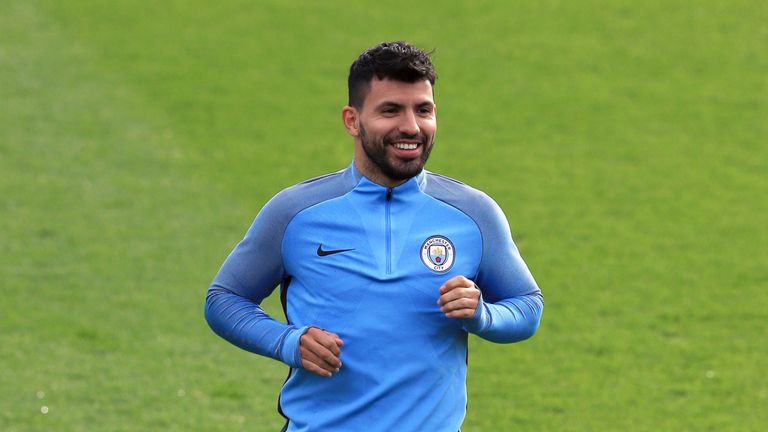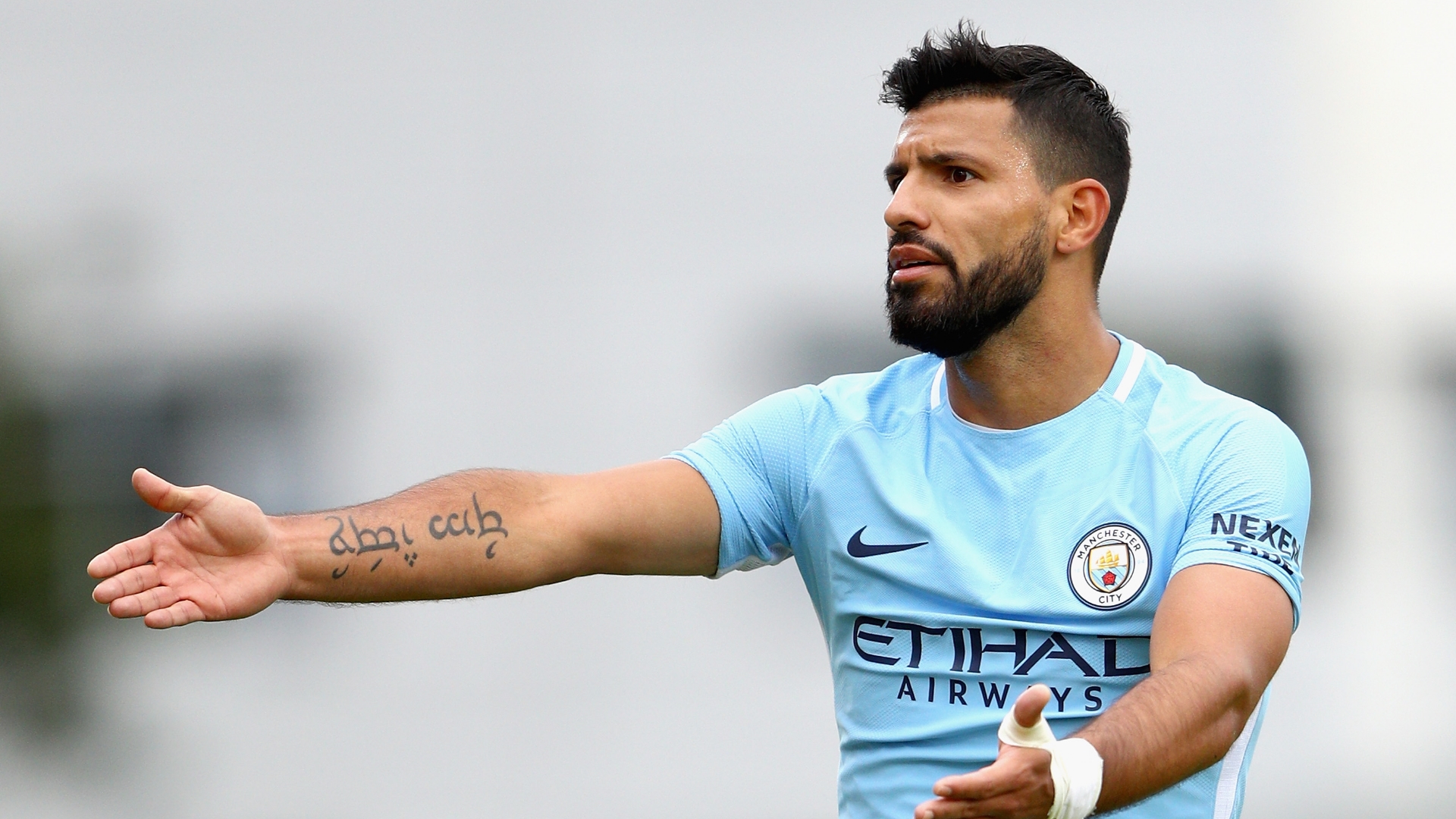As Manchester City celebrated winning the league title in 2012, a number of their players festooned themselves in flags. Edin Dzeko wore the blue and yellow of Bosnia, Mario Balotelli the red, white and green of Italy and Aleksandar Kolarov the red, white and blue of Serbia. Sergio Agüero, the player whose goal deep into injury time had sealed the title, also draped a flag across his shoulders, but it wasn’t the blue and white of Argentina: his cape was red, the colours of his first club, Independiente. “That’s where I was born,” he said. “And that’s where I’ll end my career.”
Agüero grew up in Los Eucaliptos, a villa miseria in the south of Buenos Aires. His family was poor. There were days when dinner was maté, a herbal tea, and stale bread. Most of his friends from those days, he has said, are now in jail. In that regard he fits perfectly the model drawn by Borocoto, the editor of El Grafico, in 1928. If a statue was erected to the spirit of Argentinian football he said, it would be a “pibe” (kid) with a “mane of hair”, “intelligent, roving, trickster and persuasive eyes” and “teeth worn down by eating yesterday’s bread”.

When he was nine, he joined Independiente. “At that age he was still very small, but when we took him to play indoor football on a smaller pitch you could see just what great natural ability and technique he had,” said Ricardo Bochini, the legend of Independiente who became a youth coach at the club. “He had great confidence on the ball and was an excellent finisher.”
His finishing has never left him: Agüero’s statistics are astonishing. After 23 goals in 54 league games for Independiente, he scored 75 in 175 for Atlético Madrid and 61 in 96 for Manchester City. In terms of minutes per goal, he is comfortably the top striker in Premier League history. Balotelli only registered one assist in his two years at City, the pass to Agüero at the end of that decisive game against QPR. It was as though he had waited for the perfect recipient; nobody was less likely to miss. But it is more than just finishing, of course. Agüero’s goals result also from his explosive pace and his game intelligence, that vital capacity to find space he developed on the crowded dirt pitch in Los Eucaliptos.

It was Argentina’s 1978 World Cup-winning manager, César Luis Menotti, when coach at Independiente, who first made the comparison between Agüero and the great Brazilian striker Romário. Once the similarities have been pointed out, they are hard to ignore. They have a similar build, a similarly bow-legged gait, a similar habit of striking with the toe across the ball as they shoot, so even relatively close-range finishes – like the one against QPR, swerve and dip. Roberto Mancini described Agüero as “a photocopy of Romário” while Anatoly Byshovets, after seeing his Lokomotiv Moscow side concede twice to Agüero in 2007, said he did everything Romário did but was more involved in team-play.

It is the last point that is perhaps most significant. The classic pibe would become a No10, as Omar Sívori, Pablo Aimar or Juan Román Riquelme did. As, most brilliantly, Diego Maradona did. Agüero was married for a time to Maradona’s daughter; that they have a son, Benjamín, feels like an experiment in selective breeding.
None of them would ever have been compared with Romário, however: they played too deep, created play rather than being focused on finishing moves off.
Agüero, a little like Carlos Tevez, is a striker mediated through the ideal of the pibe: compact, capable of sudden acceleration but also comfortable playing deeper or wider than a traditional poacher. “He can lead the line or play as a second striker, hovering behind an out-and-out forward and creating chances,” said Abel Resino, who coached Agüero at Atlético. “He’s a menace in the box because his close control is impeccable.”
Agüero was 15 years, one month and three days old when, in July 2003, on the final day of the Clausura, he made his debut for Independiente against San Lorenzo, supplanting Maradona as the youngest player to play in the Argentinian top flight. Bochini, grouchily candid as ever, is sceptical as to whether he was ready. “To be honest,” he said, “I think [the coach, Oscar] Ruggeri wanted to be remembered as the one who gave him his debut, because after that Sergio didn’t play for some time.” Never again, in fact, under Ruggeri.

He started two league games the following season and eight the season after that, only becoming a regular in 2005-06. In 2005, he was part of the Argentina squad who won the under-20 World Cup. He tended to be used as a substitute, but he became firm friends with Lionel Messi, sharing a room and playing a lot of PlayStation. He also won a squad drawing competition for his picture of Ronaldinho praying.
Such are the economics of Argentinian football, it was inevitable that the following year Agüero was sold, joining Atlético for €23m. One full season at Independiente, though, was enough to cement his position as the greatest hero of the club since Bochini and Daniel Bertoni were leading them to four successive Libertadores titles in the 70s. “What we are seeing,” said Menotti, “is one of the great arrivals in Argentinian football.” Did Agüero feel the pressure? “Pressure,” he said shortly after joining Atlético, “is growing up a villa.”

Nonetheless, it took him time to settle in Spain, with Atlético’s medical staff concerned he consumed too much meat and insufficient water. In that first season, he played just off Fernando Torres and, like the Spain striker, had his name tattooed on his forearm in “Tengwar”, one of the elvish languages invented by JRR Tolkien, although he admits that at the time he had not seen the Lord of the Rings film. “The tattoo artist told me it looked good, so I got it done,” he said.
Torres’s departure for Liverpool and the arrival of Diego Forlán – another who had begun his career at Independiente – allowed Agüero to play high up the pitch, and it was then he really began to blossom. The only doubt is the state of his hamstrings. Agüero said before coming to the Premier League he had loved watching Michael Owen and, like the former Liverpool forward, his hamstrings have proven fragile, a familiar problem for the lightning fast. They hampered him at the end of last season and they hampered his World Cup.
At 26, he is just at the age when that sort of injury can become a major problem. If it can be managed, though, he should have another six or seven seasons of draping himself triumphantly in the flag of Independiente before going home to wear their shirt for a farewell season or two.